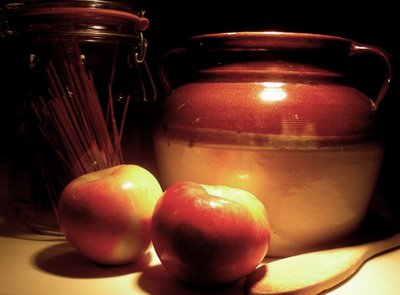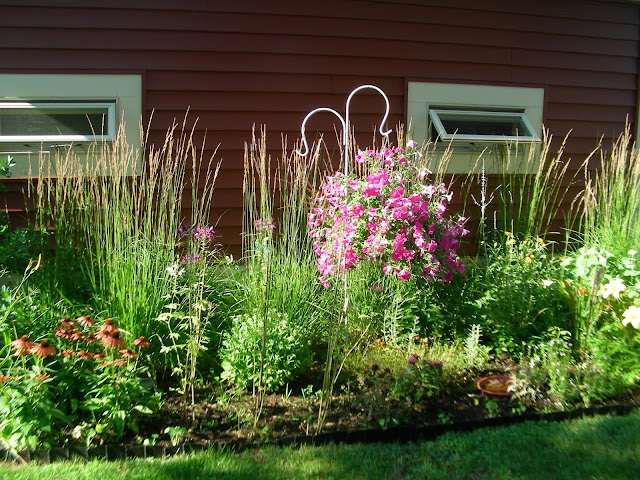Grandma Annie's Back Kitchen
 Setting my cranberry upside-down cake on the cupboard in the “back room” to cool the other day, I was reminded of Grandma Annie’s back room.
Setting my cranberry upside-down cake on the cupboard in the “back room” to cool the other day, I was reminded of Grandma Annie’s back room.It had been a kitchen once, in one of the mid-19th century structure’s many incarnations. But when I was a child, it was used mostly for storage.
When I was a child, it contained a massive red cupboard, filled with kitchen items Annie used only once or twice a year. Old bean crocks sat cheek by jowl with glass jars of beans or rice. An old tin colander, ancient wooden spoons, a bowl of cookie cutters and other kitchen miscellany filled the shelves.
The back room also held an enamel-topped table piled with boxes of canning jars and bins of apples or baskets of potatoes.
Annie used this room as a second pantry, a sort of keeping room. She dried herbs in that room, something that intrigued me when I was a child, and because it was unheated in winter and cool in summer, she also set baked goods there when they needed to cool.
The room was connected to the kitchen by a hallway, and the hallway ran along the side of the house. It was part of the house, and yet not part of the house.
The keeping room led directly to Annie’s vast backyard. In summer, she’d open the back door and the hall door and the cross-ventilation kept her old house cool on the hottest July days.
Usually by August, the old treadle sewing machine Annie kept in the room would be pressed into service, as she altered our clothing for the school year or sewed aprons and tablecloths from brightly-colored cotton.
My own back room serves a similar purpose. Here is a collection of mismatched cupboards and bins and shelves that hold gardening supplies, bird feed, canned goods and cookbooks.
It was once part of the kitchen, but the people who “remodeled” our 1896-home in the 1970s, split the room into two.
I spend more time in my back room than Annie did in hers. It’s a cozy place, with a patterned rug and a comfortable chair. In summer, when the crickets sing, it is my favorite room in the house.


Comments
The cabinet was old and towering and had been built by Pepére, Annie's father.
I love your writing style Mimi! I feel like I'm right where you are describing as I read.
I loved those backrooms. . .
The old back room had an old smell, too, sort of old apples and ancient wood. . .
Thanks, Fran!
Terri, that is amazing — I wonderf if all old houses had them, or is it a French Canadian thing? Yes, it was like stepping back into the past, wasn't it.
Funny thing, I have dreanms of hidden rooms. That means something — forgot what — and that room is often part of them. It was never part of the house's day to day life.
Apples and cherries, hmm? That would be a Michigan kitchen, all right.